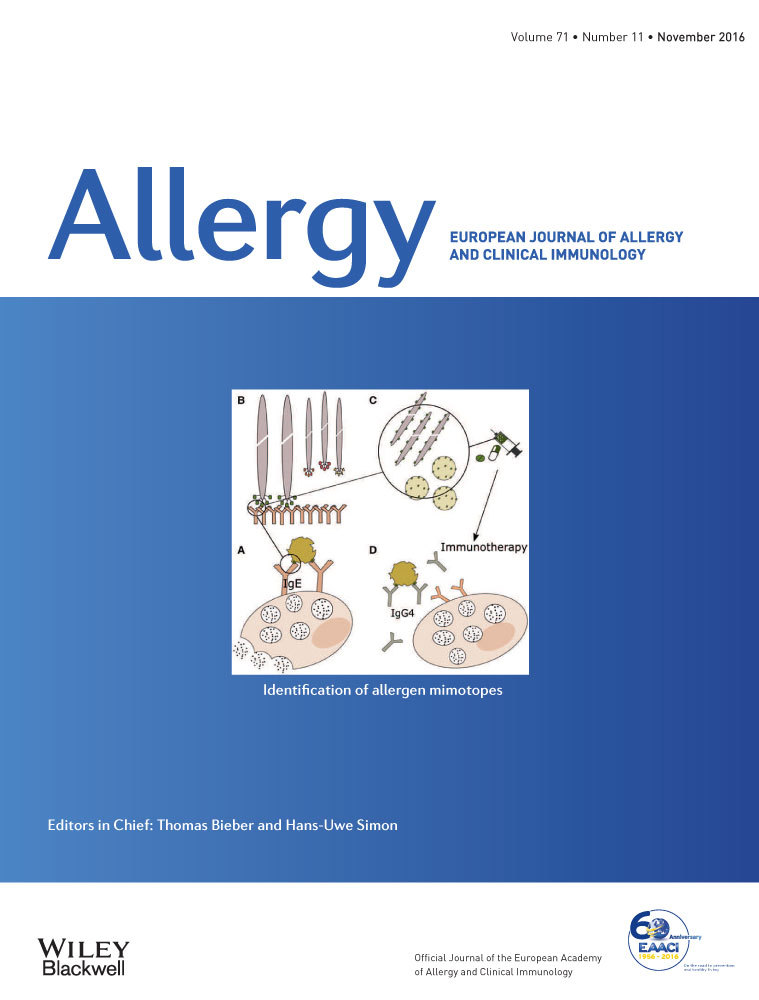Hymenoptera stings in the head region induce impressive, but not severe sting reactions
Abstract
Stings in the head region are considered to be a risk factor for severe systemic reactions to hymenoptera stings. We supposed that stings in skin areas, which are well supplied with blood, lead to more severe reactions and tested our hypothesis in 847 patients with confirmed hymenoptera venom allergy. However, symptom severity was independent from sting site: only 16.3% of patients with severe reactions were stung on the head (P = 0.017). But we confirmed age > 40 years (P < 0.001) as well as elevated basal tryptase levels (P = 0.001) as risk factors. Taking antihypertensive drugs seemed to have an influence: 41.7% of patients taking antihypertensive drugs experienced a severe reaction compared to 29.5% of patients, not taking such drugs (P = 0.019). However, considering patients' age in regression analysis, taking antihypertensive drugs had no effect on symptom severity (P = 0.342). Importantly, in most patients with severe reactions, cutaneous signs were absent (P < 0.001).




